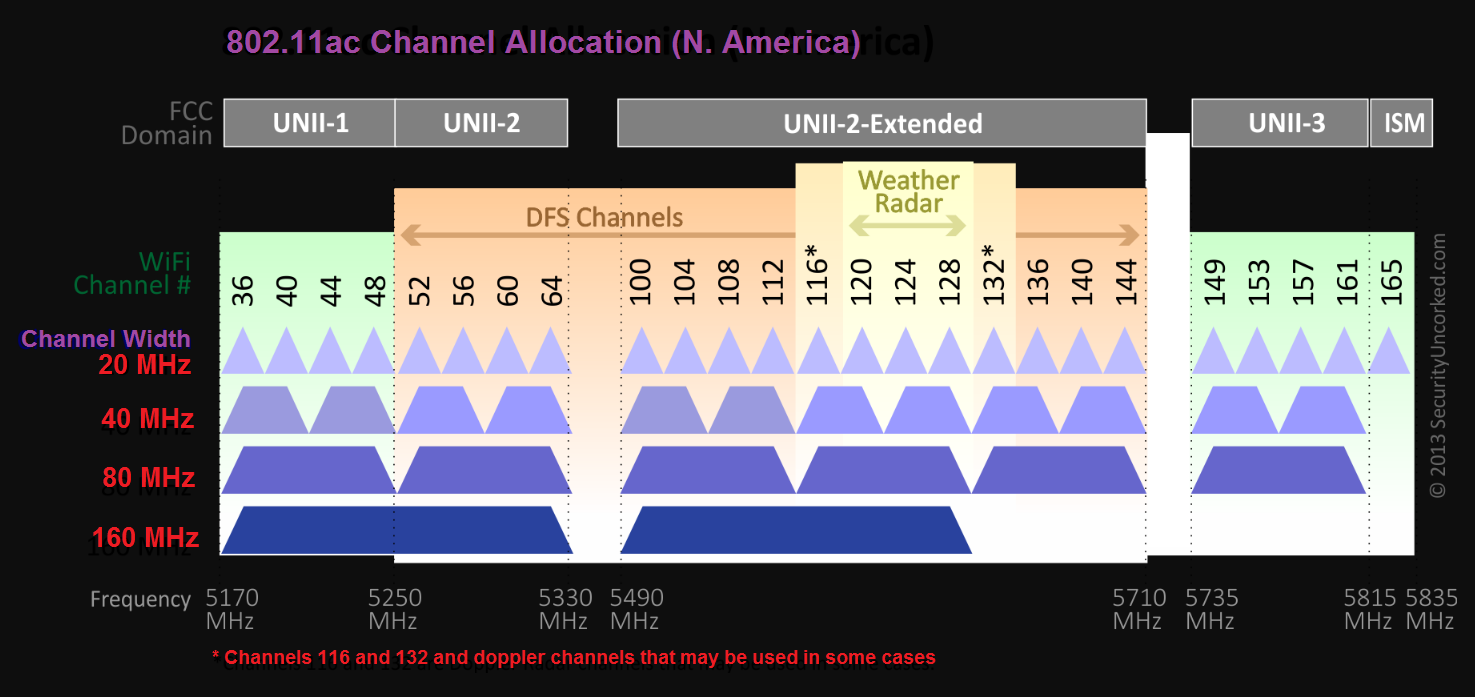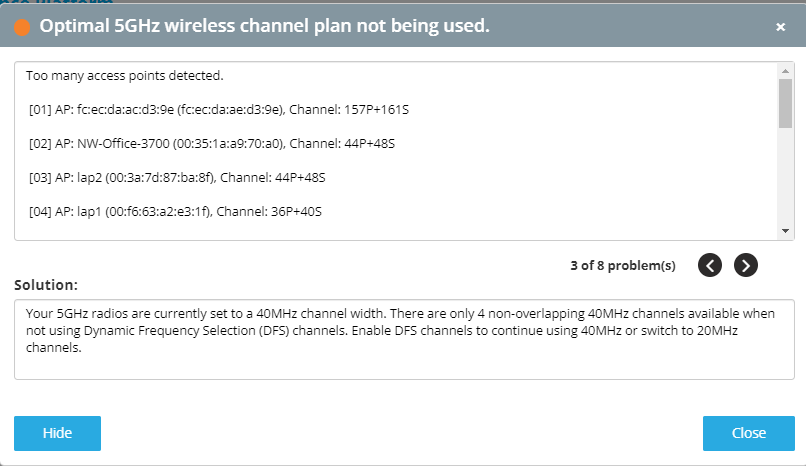¶ Dynamic Frequency Selection (DFS)
Dynamic Frequency Selection (DFS) is a protection mechanism used within certain bands of the 5Ghz Wi-Fi spectrum. Historically, the UNII-2a and UNII-2c bands of the 5GHz spectrum were reserved for RADAR equipment operated by the armed forces, commercial airports and weather monitoring stations. In 2003, some countries began allowing for the co-existence of Wi-Fi devices on the RADAR frequencies, with the provision that RADAR equipment has priority over Wi-Fi devices.
To ensure that Wi-Fi devices do not interfere with any RADAR signals, the group of 5Ghz Wi-Fi channels common to RADAR are protected by DFS. This protection requires that an AP will immediately switch away from any channel where RADAR signals are detected. We refer to the channels that Wi-Fi and RADAR overlap as DFS channels.
Which (if any) DFS channels are allowed to be used by Wi-Fi equipment varies from country to country. Below is a chart showing channel allocation for the 5Ghz wifi spectrum in North America. The channels in orange are DFS channels.

Source : Wireless LAN Professionals
¶ DFS Channels Best Practices
Using DFS frequencies allows for 16 additional 20MHz channels on top of the 9 non-DFS channels, so it is strongly recommended to use DFS channels in dense environments. However not all APs and WLAN controllers support DFS channels. DFS is a separate regulatory certification and depending on the AP model and when it was released, it may not support these channels.
Some vendors allow DFS channels to be used, but have them disabled or excluded from auto-channel algorithms by default. If you are unsure if your APs support DFS, you can usually find this information on the data sheet for the specific model of AP you have. You can also open a support ticket with your WLAN vendor.
The only time you shouldn’t use DFS channels is when your location is in close proximity to an area where RADAR events are present (e.g. an airport or military facility). But even in these circumstances, the APs are designed to automatically change channels and won’t be disruptive to Wi-Fi clients. It will make channel planning more difficult however.
¶ Wyebot Dashboard
Wyebot sensors will automatically discover the channels and channel widths used by APs in your network. Based on this information, the Wyebot dashboard will give recommendations about the best channel plan to use.
